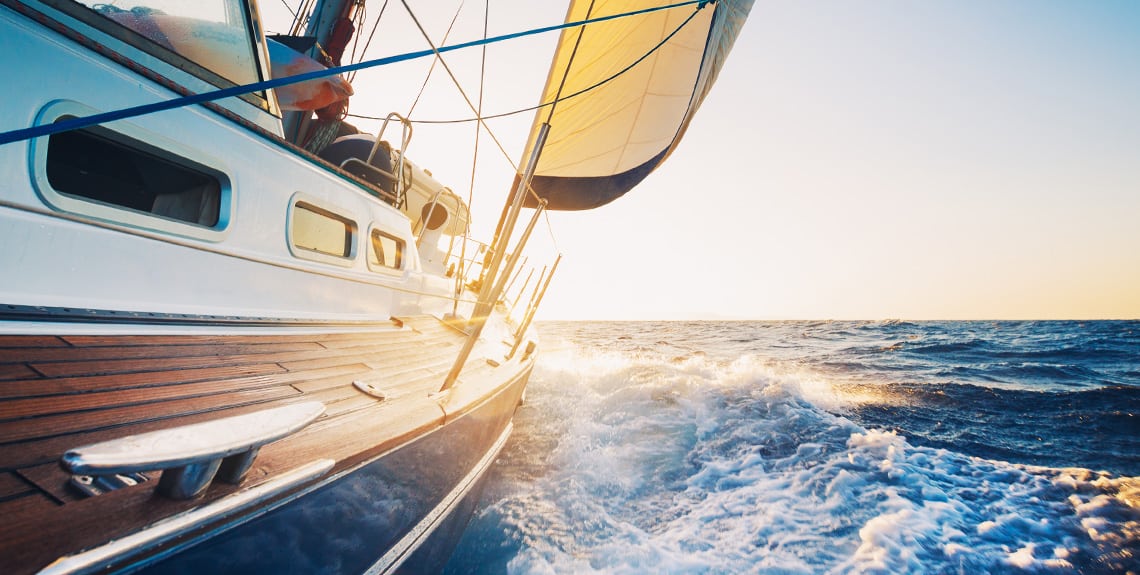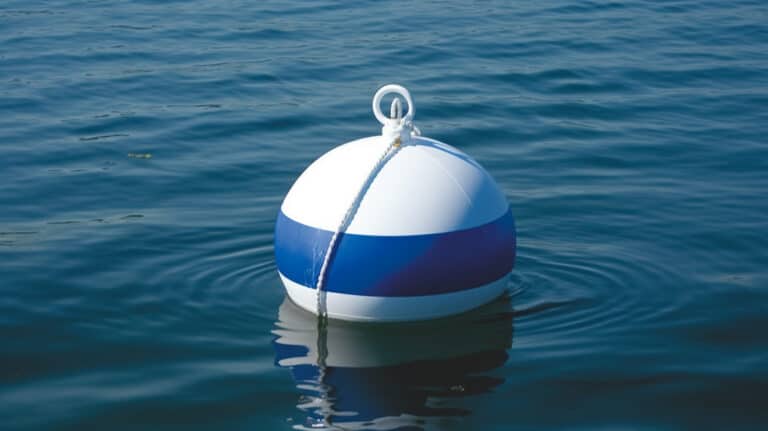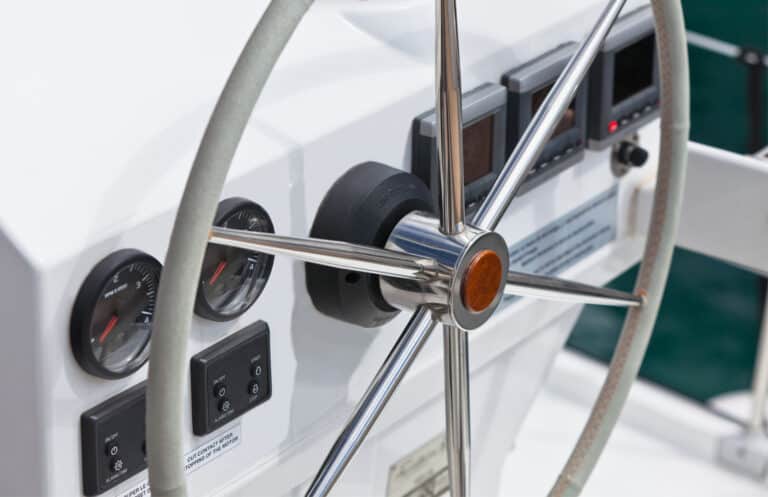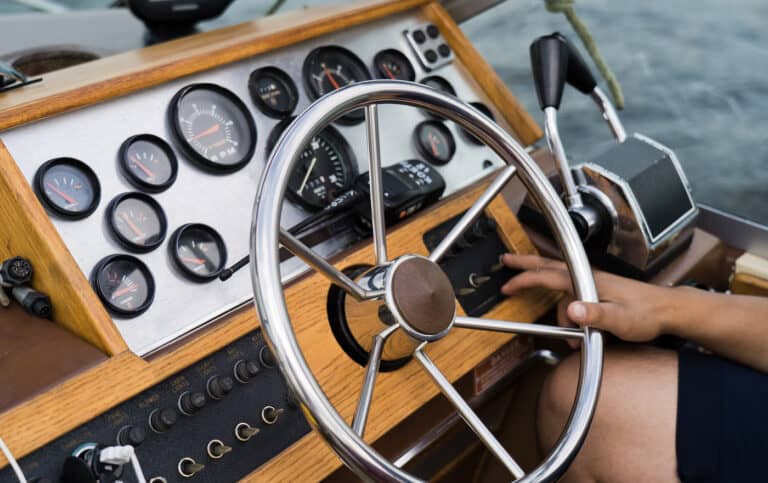Let’s make it clear from the very beginning how long does it take to cross the Atlantic?
In general, sailing across the Atlantic takes about 20-25 days (3-4 weeks), in a sailboat of the 30-40ft class.
So it’s three to four weeks of constantly sailing day and night, tired, wet, and miserable.
In this post we are sharing a compilation of what you need to know essentially to estimate the time to sail across the Atlantic, and minimize the suffering of being alone in the middle of the ocean.
- The Distance
- Does the Direction Matter?
- What is the Best Time to Cross the Atlantic by Sailboat?
- How to Use the Trade Winds?
- How Long Does It Take a Cruise Ship to Cross the Atlantic?
- How Long Does it Take to Cross the Atlantic by Motor Yacht?
- Do Your Math
- How Long to Sail Across the Atlantic – Final Words
The Distance
First, let’s define the problem we are going to face.
The distance of a journey across the Atlantic is roughly 3000 nautical miles, where 2700 NM is the classic distance between the Canary Islands and the Caribbean.
Still, a boat never travels in a straight line; neither does she hold a constant speed, and there are also weather, waves, how great is your steering skill, and many other things.
Look at the online charts to excite yourself about what a crowd is there when it’s the best season to cross the Atlantic. Every pink mark is a private boat!
NOTE The snapshot was taken in late November, the high season.
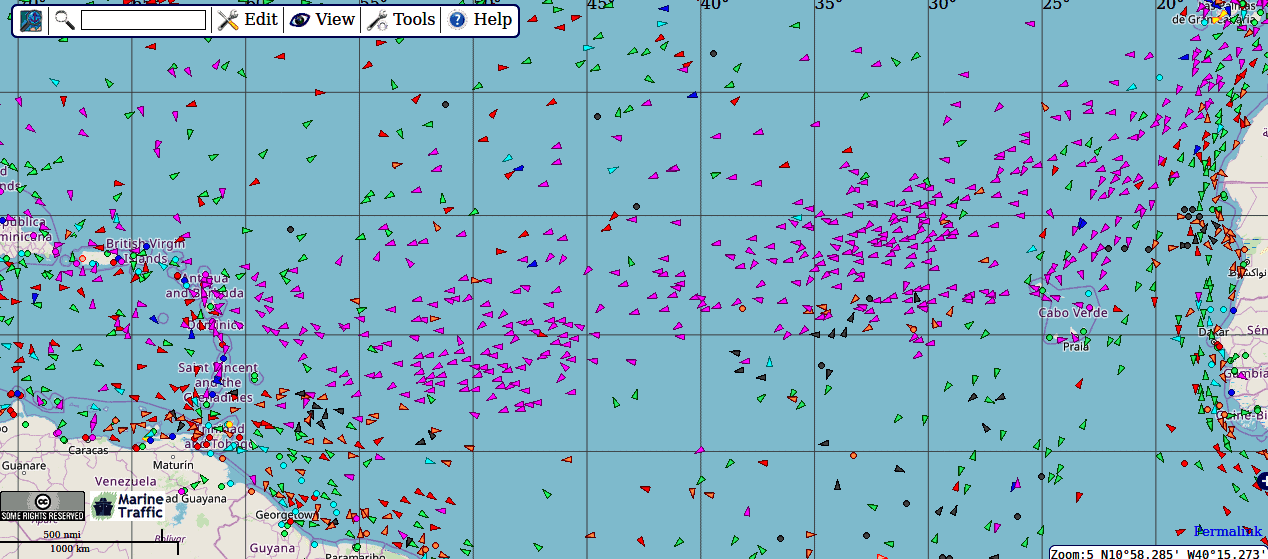
So, to sail across the Atlantic may take about 20-25 days for most of them to travel, or it may eventually take a whole month in an unfortunate situation.
Does the Direction Matter?
Apparently, we cross the Atlantic in both directions. So, what is the real difference, and does it matter at all?
How Long to Sail Across the Atlantic From West to East
You will probably take the so-called Northern Passage eastward from America to Europe across the Atlantic. That means you “climb” north first, then travel the main distance, about two thousand miles, from the Bermudas to the Azores, then head to the coast of Portugal.
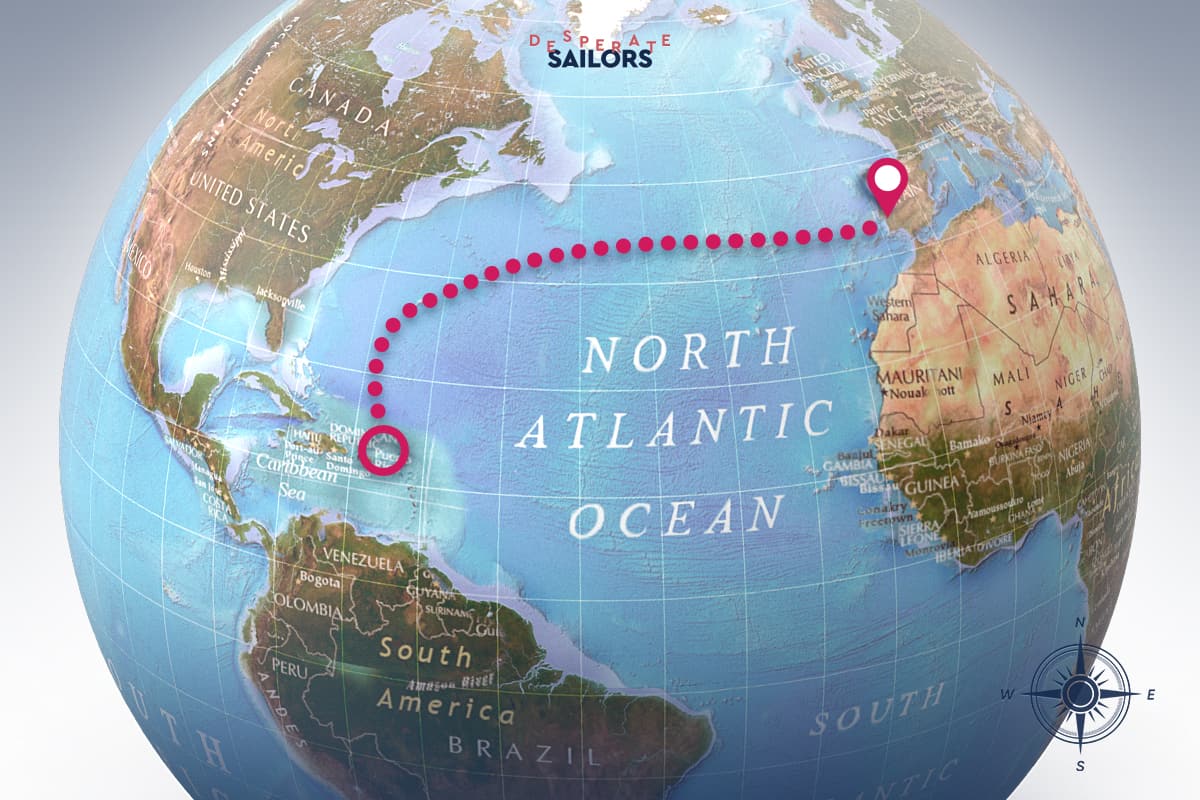
The westerlies are yet another type of ocean wind; they work similarly to the trade winds but for the opposite direction. The westerlies occur farther to the North, which is not alike the trade winds blowing practically next to the equator. Prevailing in the latitudes between 30 and 60 degrees North, the westerlies make us to choose the Northern passage for traveling across the Atlantic eastward, from the Americas to Europe.
Here is the breakdown of the route:
- Caribbean to Bermuda – 850NM (5-8 days)
- Bermudas to Azores – 1900 NM (14-17 days)
- Azores to Portugal – 700 NM (4-8 days)
Totaling about 3500NM it will take roughly 23 to 33 days (three to five weeks).
TIP NM is a nautical mile, which is 1852 meters.
Have it in mind the Northern route in the eastward direction will probably take a little longer compared to the “classical” Southern when you cross the Atlantic westward. And it will be chilling over there in the North, consider clothes.
And From East to West
As we’ve mentioned earlier in this post, the Southern Passage fits best to cross the Atlantic westward – from Europe to the Americas.
Everyone starts from the Canary Islands, embarking on the Southern route across the Atlantic, including you, me, and Christopher Columbus, in 1492 (the yellow line on the image below).
But some sail to Cape Verde, offshore from Dakar, and then straight to the west (the orange line).
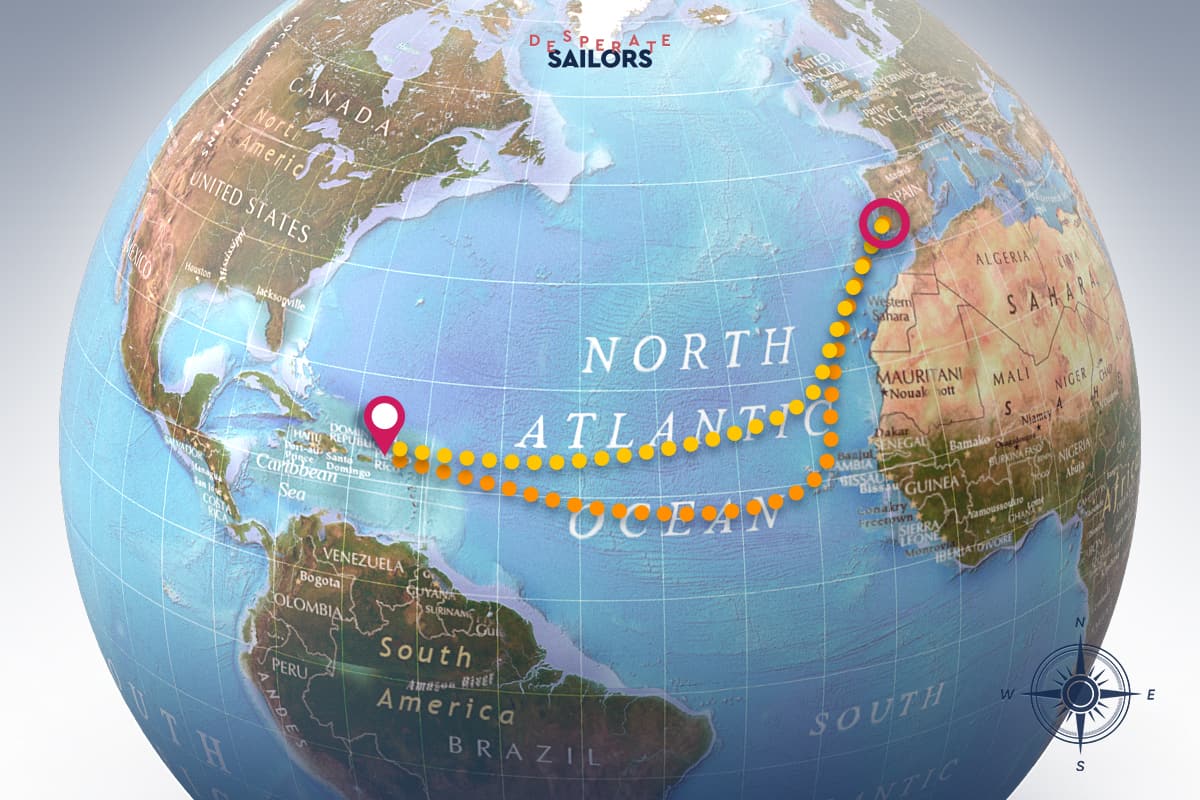
Here is the route breakdown:
- Portugal to Canary Islands – 750 NM (5-7 days)
- Canary Islands to Cape Verde – 850NM (6-8 days)
- Canary Islands to Caribbean – 2700NM (15-20 days)
If you’d love to visit Cape Verde, then the total distance to cross Atlantic from East to West is around 4300NM and time needed is about 26-35 days (three to five weeks). But if you are going straight to the Caribbean from the Canaries, no Cape Verde, then the route shall be shorter and constitute something about 3000+ miles.
What is the Best Time to Cross the Atlantic by Sailboat?
The truth: you cannot just go any day across the Atlantic unless you want to spend a whole month or more rambling in the ocean (yeah, what exactly Columbus did wandering around for three months).
The weather and the temperatures jointly make November and December the best time to sail across the Atlantic catching those sweet trade winds to ease your journey.
So, the ocean is warmer, hurricanes are less probable, and the trade winds work in your favor once you sail from the Old World to America in November and/or December.
How to Use the Trade Winds?
The trade winds blow from the northeast in the Northern Hemisphere and the southeast in the Southern Hemisphere. For both sailboats and motorboats, the trade winds define how long to sail across the Atlantic from Europe to America.
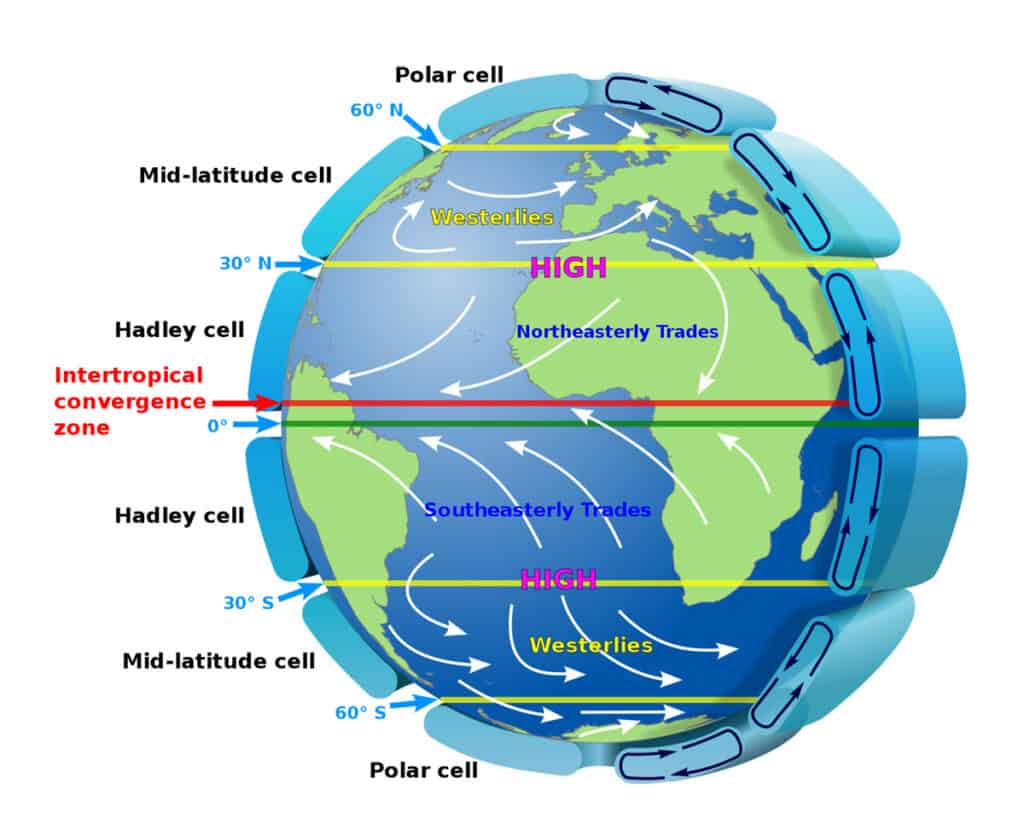
So, in the Atlantic, the trade winds will push you along the equator southeast towards the Caribbean at a particular span of the year.
Now, all you have to do is pick a good season to take the best advantage of the trade winds, and it is November and December – just head south from Tenerife (the Canary Islands) at least 100 miles down for the trade-wind magic to begin.
The trade winds are predictable and blow in the same direction every time. As a result, the trade winds served well for centuries, allowing significant commercial benefits: such as fewer supplies and less fuel.
DID YOU KNOW?
How Long Does It Take a Cruise Ship to Cross the Atlantic?
It depends on a cruise ship you are on to cross the Atlantic, you know, Titanic hasn’t yet arrived. Seriously, crossing the Atlantic nowadays by cruise ship takes 6-8 days.
How Long Does it Take to Cross the Atlantic by Motor Yacht?
Until this point, we’ve mentioned crossing the Atlantic by an average sailboat, like 35-40 feet, making 5-6 knots average speed, where the average is not maximum.
A regular motor yacht makes an average 10-12 knots cruising speed, which should be significantly lower compared to a maximum speed you’ve performed while fishing with friends. As you carry all fuel through the ocean, you care about the efficiency, where 10-12 knots should serve as an efficient cruising speed.
For the mentioned 3000 miles of the cross-Atlantic voyage, you’ll require somewhat 300 hours, which constitutes 10-12 days, maybe two weeks, by the motor yacht.
Without prejudice, this is already pretty close to what a cruising ship performs through the Atlantic.
Do Your Math
Before starting your passage math and planning your journey, estimating how long does it take to cross the Atlantic ocean, consider our short list of tips for a first-timer to remember about the time and the distance:
Choose a Proper Time to Travel
Local locals say that hurricane season in the Caribbean officially lasts from June to October, with peaks in June and July, going milder since August. The trade winds blow well in November-December, and the period counts as the best season for that.
Stick to the Average Speed
Average speed is not the maximum speed and not even the cruising speed. While counting how long does it take to cross the Atlantic, consider the average speed shall be surprisingly low, which you will be fighting for.
Count Miles, not Time
Speed, fuel consumption, wind, waves, and other conditions make us count miles instead of the time required, which means “gallons per hour” rather than a distance traveled per hour.
Single-handed vs Crewed
In terms of how long does it take to cross the Atlantic, also understand that an average speed of a single-handed boat, logically, may be lower than if you are a crew of at least two people.
Crew Dilemma
Let’s call it a crew dilemma: the bigger crew makes it easier to sail; on the other hand – such requires more supplies. The equilibrium to find you need, Yoda said (ha-ha, kidding).
Nonetheless, many-many boaters travel single handed, and yet another big number of us travel as couples.
Four people on a 30-40ft boat is somewhat fine yet.
My friend sailed from England to the south of Brazil, apparently much longer rather than the classic route, carrying 6 people on a 30ft boat, and he did not look too happy recalling this 50-day voyage heavily overcrowded.
Spare Time
Do not plan any “important business meeting” on the next day after your expected arrival. That means – you’d better have a lot of spare time, as your travel across the Atlantic may suddenly become a little longer.
Supplies
Mind food and water supplies. We have a separate post advising what you need to know before going through the Atlantic. However, knowing the how-long, do not forget to supply an excessive amount of food and fresh water. And fuel.
How Long to Sail Across the Atlantic – Final Words
Speaking about how long to sail across the Atlantic, we emphasize on sailing, I bet the majority of all private boats crossing the Atlantic are sailboats, rather than motorboats.
The price rises higher when you want to go across the Atlantic by motor, because the fuel hits the price, also it’ll require extra storage (by the way, for safety matters, remember at least to double an amount of fuel calculated for the distance).
A good news is that it’s usual boats go through the ocean, skippered by amateur skippers, like you and me. The internet is flooded with reports about how 30-40 foot boats cross the Atlantic both directions, so you can do it too. It won’t be ezpz though.
Choose the right time, plan everything properly, the route, the stop overs, supplies, energy, and book slightly above of those 3 to 4 weeks in your schedule to cross the Atlantic comfortably, and it will be something you will remember for the rest of your life.
Good luck, Captain!
